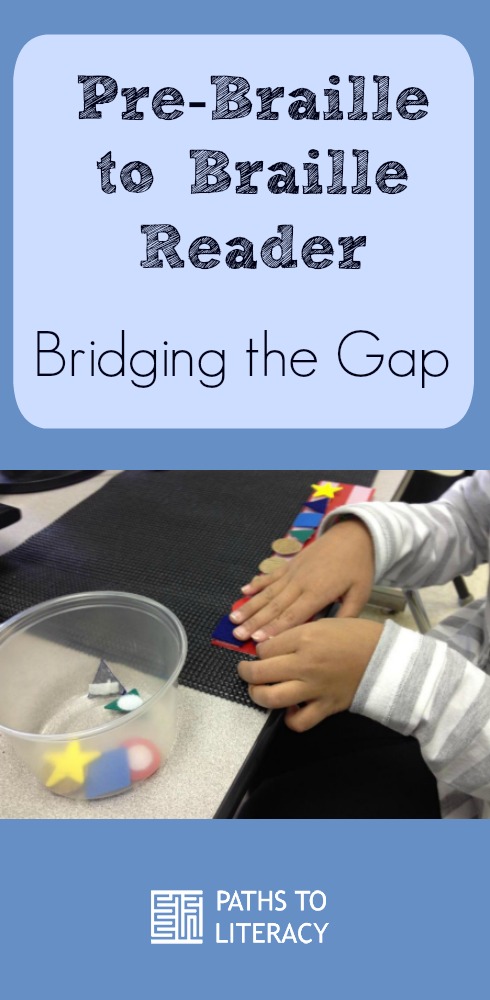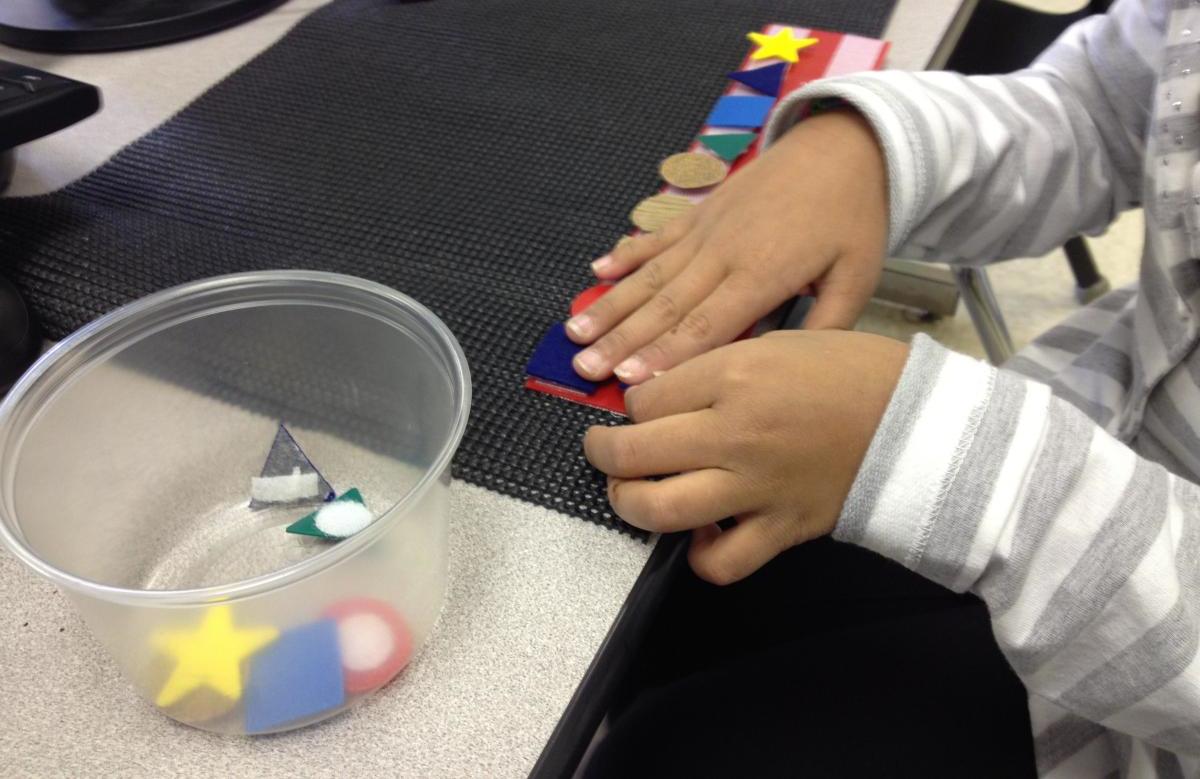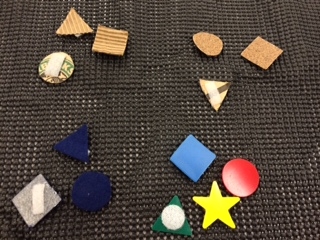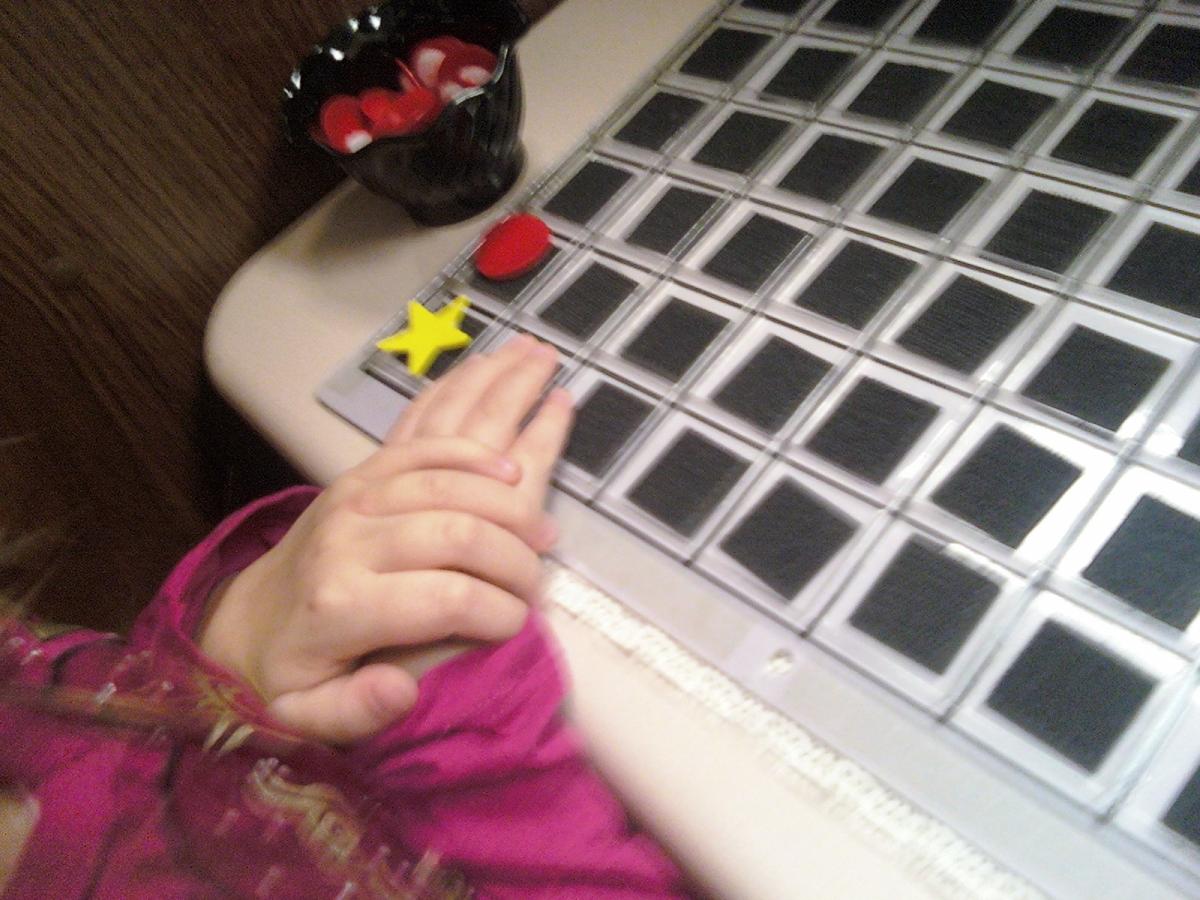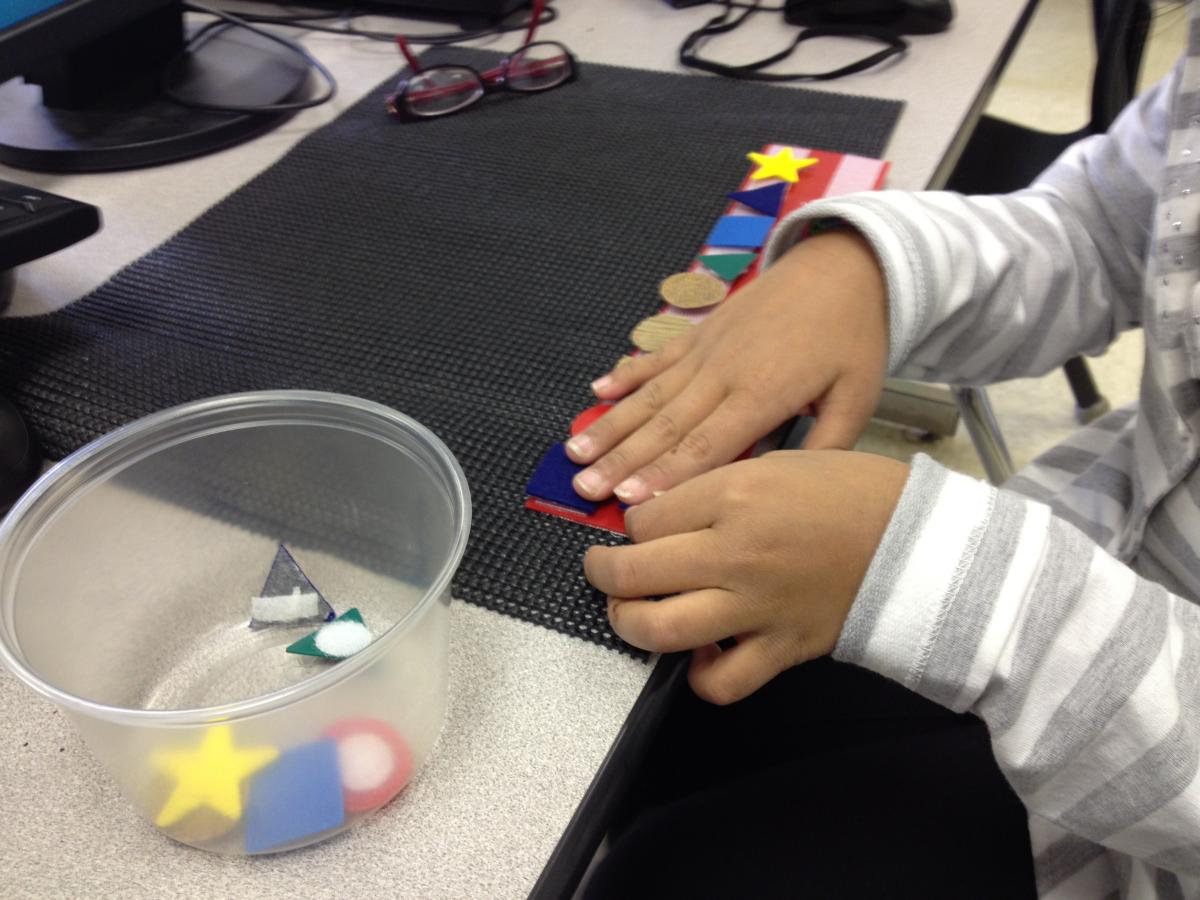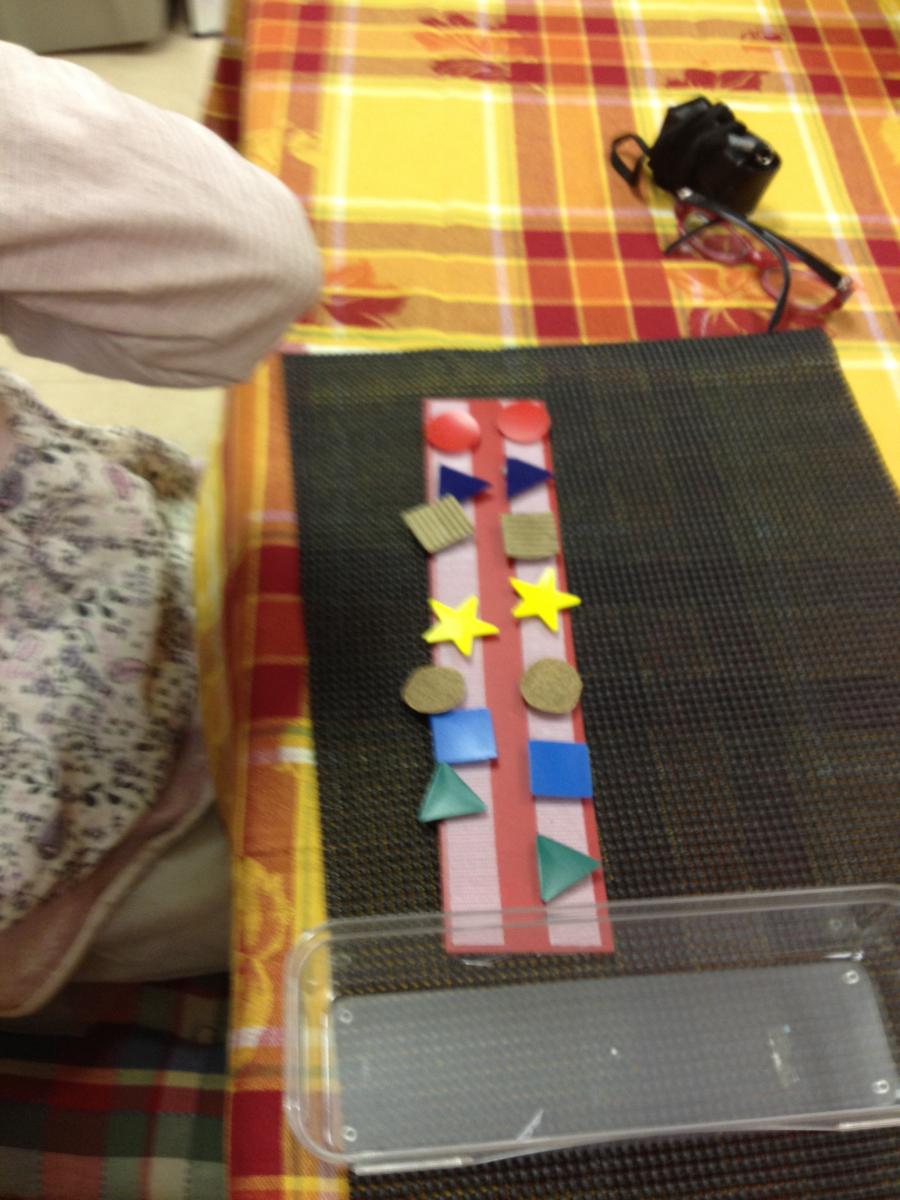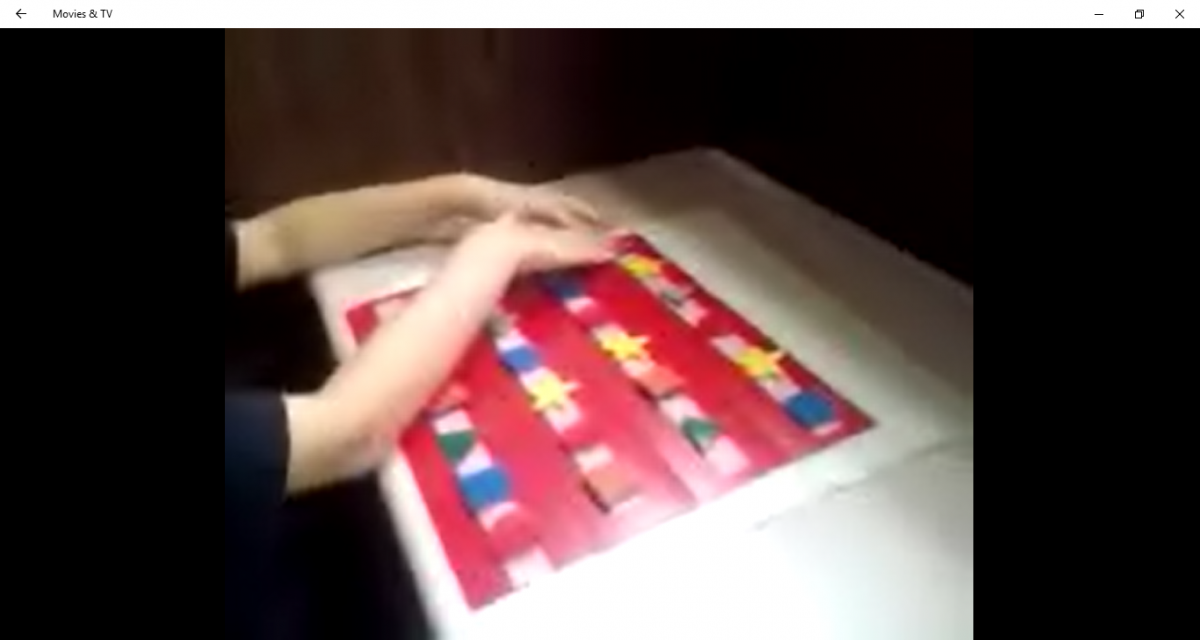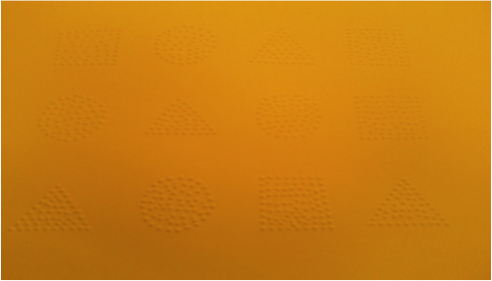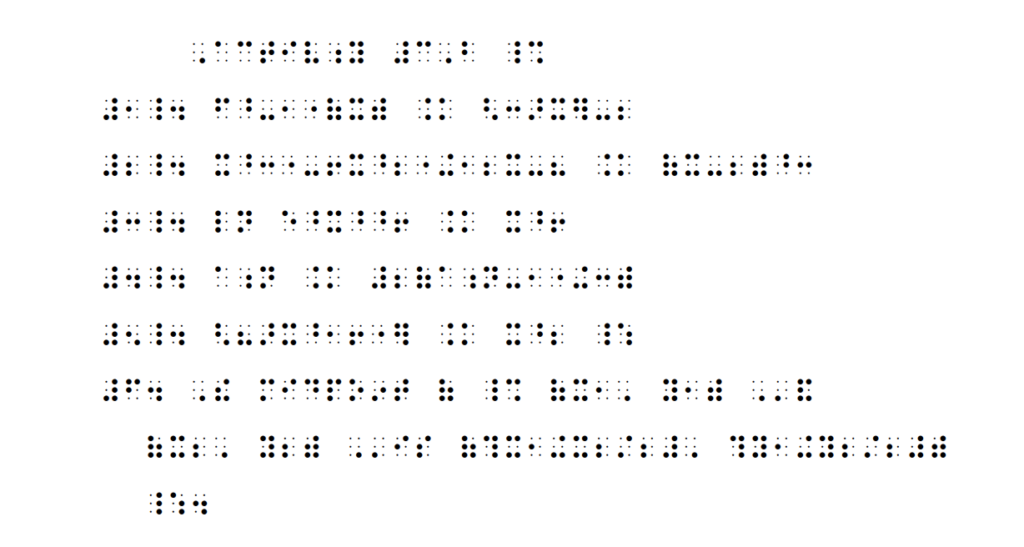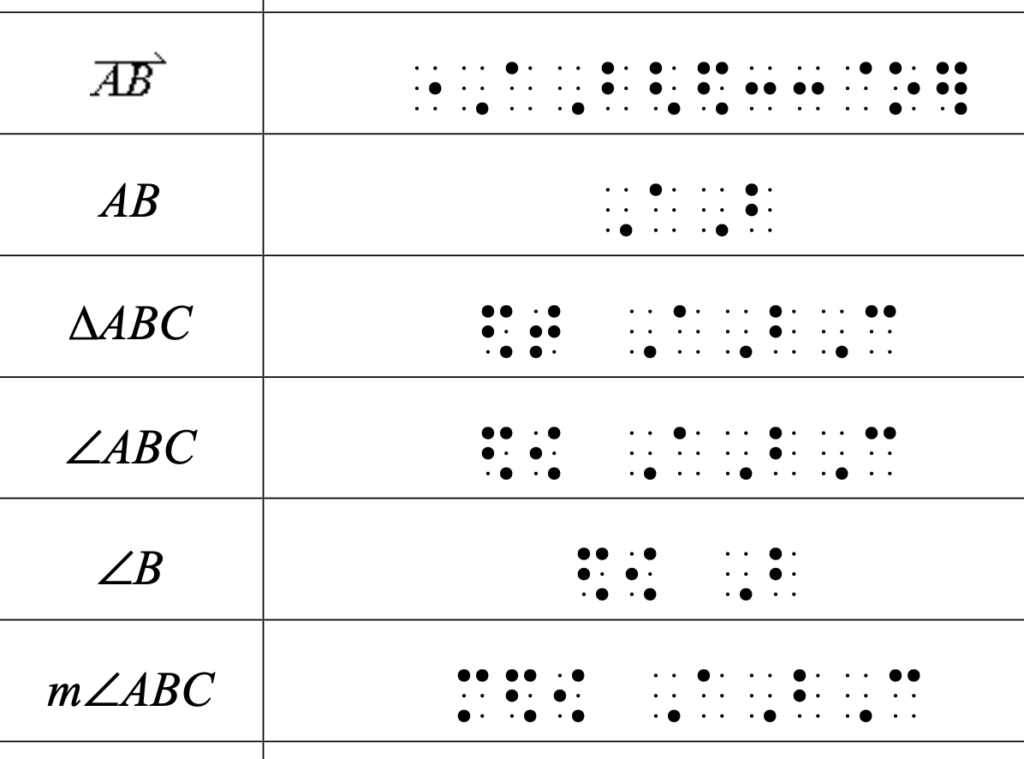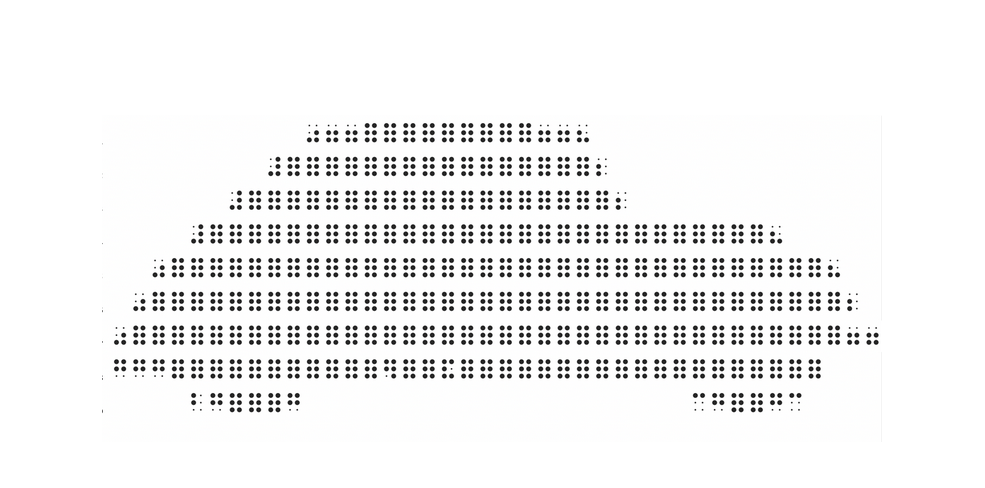This post will specifically discuss braille instruction strategies for students with multiple impairments or intellectual disabilities.
We are assuming that you have done pre-braille activities up to this point. Examples of tools and resources for the pre-braille stage:
- Oregon Project Checklist
- Experience Books
- Bookbags
- Experience Activities: Exploring a purse, toolbox, baking items, etc.
- Fine motor: lacing cards, peg board, thera-putty, etc.
- Tactile Awareness: Identifying Textures
- Great book: Beginning with Braille by Anna Swenson (Specifically refer to Chp. 8)
Bridging the Gap Steps:
1. Progressing from identification of 3-D Shapes to 2-D Shapes
- In the beginning explore hand-under-hand. Discuss the 3-D shape and connect to a real life object, e.g. rectangular prism to a cereal box, cone to an ice cream cone or sphere to a ball.
- Build upon shapes recognized. Yes, all the way to the hexagonal prism!
- Transfer the 3-D shapes to 2-D shapes that they can hold in their hand.
- I made these out of a plastic notebook divider.
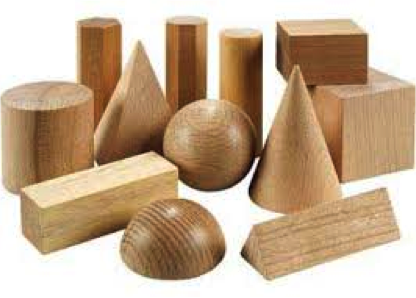
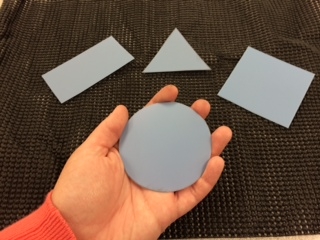
2. Move from the large 2-D shapes they can hold in their hand to small 2-D Shapes.
- Use the hundreds board shapes you can get from APH.
- Create textured versions of these shapes too!
3. Progress from sorting these shapes, to identification, to matching and finally to understanding same and different.
- Start small and progress, 2, then 3, then 4, etc.
- Activities:
- Student finds requested shape
- Student pulls a shape out of a container, identifies, then locate matching shape
4. Progress from same and different concept to tracking lines of 2-D textured shapes.
- Again, progress to more difficulty
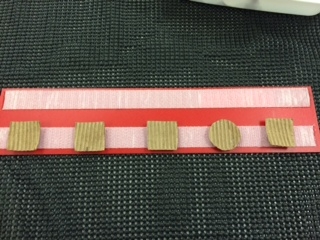 |
Bumpy squares with one bumpy circle |
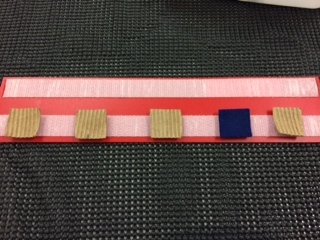 |
Bumpy squares with one soft square |
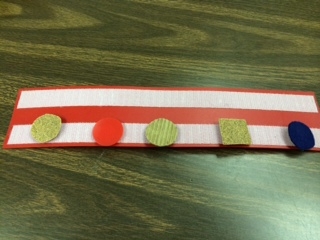 |
Multiple textures with a different shape |
This will help them to become sensitive to what is under their fingertips!
Tracking Lines
- Once they are able to identify shapes
- Begin by tracking 2 lines
- Then, increase the amount of lines and shapes.
- Track just like they would a braille line
- Mimic tracking braille
- Practicing getting to next line
- Hand under hand, then hand over hand (skip hand over hand if they are able to mimic how you tracked the lines hand under hand), then physical prompting, then verbal prompting to NO prompting!
- Time them to increase their speed, they like to try and beat their best time
5. Transfer 2-D Hand-held or Raised to 2-D Braille on the Page
- 2-D velcro shapes are still more raised and 3-D than braille
- Must transfer awareness of velcro shapes to actual 2-D shapes or characters on the page
- I like to start with tactile shapes glued to the page:
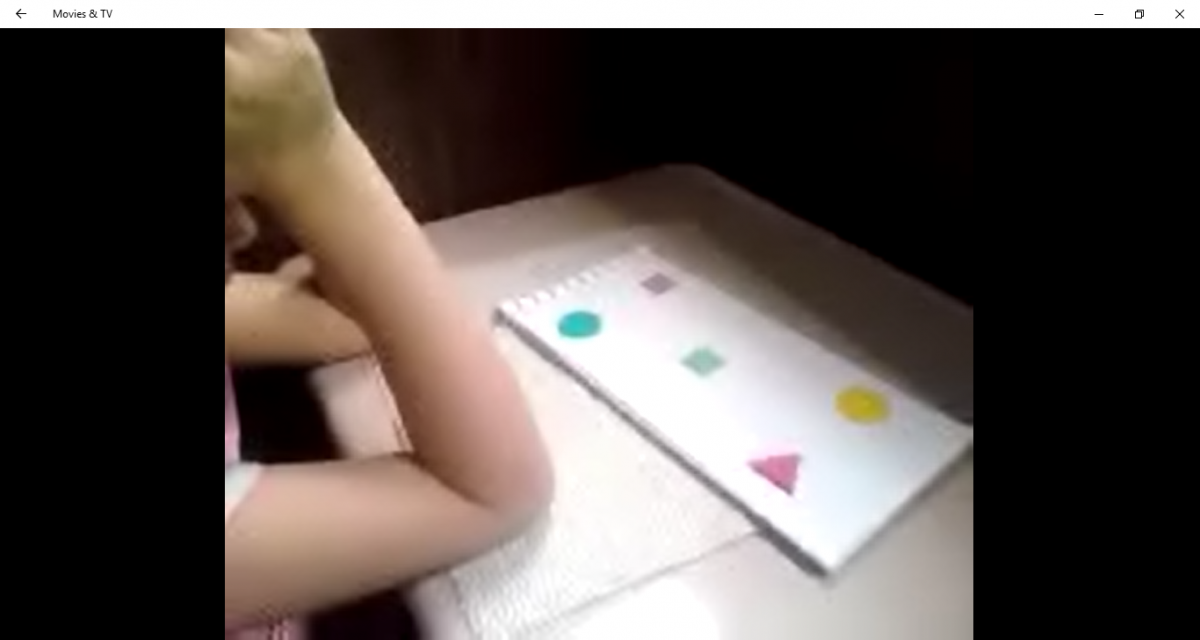
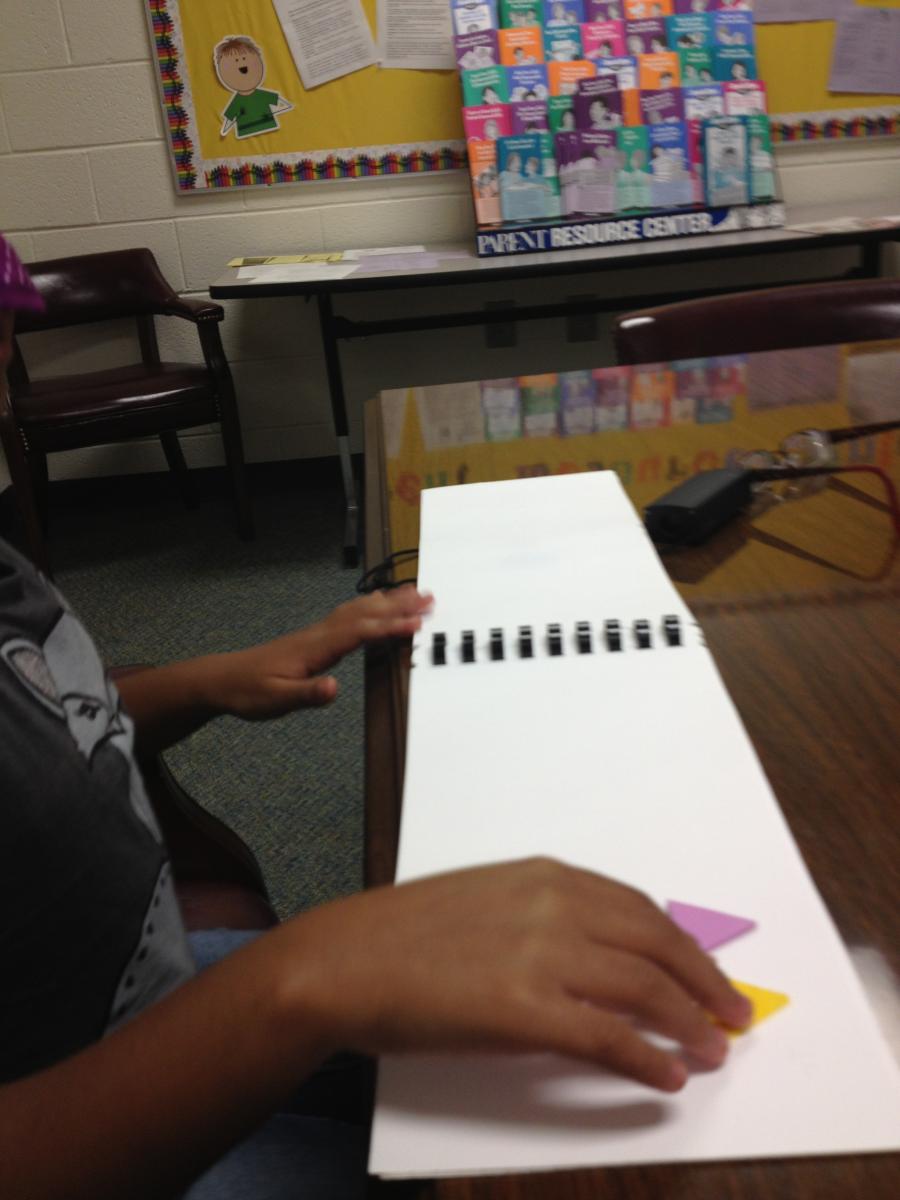
- This leads into book concepts
- Begins awareness of how to “read” a book
- This is the first book they can truly read independently
- Title page may be: square, circle, triangle
- Include braille page numbers and teach them to identify where the page number is located
- Ask: What’s on this page? Where is it spatially?
- Ask: Can you find the page with a soft square? Can you find the page with one smooth triangle in the top left hand corner?
- Increase complexity
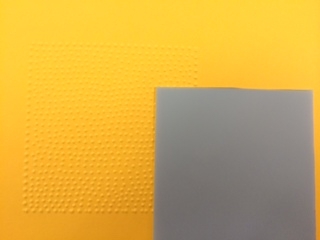 Moves into the Touch and Tell books Vols. 1-3
Moves into the Touch and Tell books Vols. 1-3
- Found at APH
- Match previous 2-D shapes to the braille shapes
- Same as Velcro shapes
- Identification
- Same and Different
- Tracking Lines
6. At this point, you will now be able to move on to typical braille instruction.
- Swing Cell
- Flash Cards: Make your own or purchase from APH or Oakmont (Amazing volunteers who make products at no cost), etc.
- Building on Patterns
- Mangold
- Remember: Every child is different. For one of my students, understanding the layout and counting the dots worked. Other students may not be able to understand this way. In Beginning With Braille, author Anna Swenson suggests using “positional concepts”, such as “Y has a big hole on the left” and “R has 3 dots on the left and one dot on the right”. Find what works with your student and stick with it!
